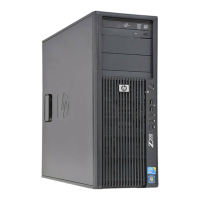Table 4-1 Computer Setup (F10) Utility menu descriptions (continued)
Heading Option Description
Embedded
Security Device
This option becomes available if Embedded Device is set to Available.
Embedded Security Device (Hidden or Available) turns the Trusted Platform Mechanism (TPM) on
and off. Device Hidden is the default. If this option is made available, the following options
become available:
●
Power-On Authentication Support—Enables and disables an authentication feature that
requires you to enter a TPM user key password to start the computer. This feature uses the
TPM to generate and store the authentication password.
●
Reset Authentication Credential—Resets the authentication functionality and clears
authentication credentials.
To enable the Embedded Security Device and to access any security features associated with the
device, you must enter a setup password.
Setting a device to Available enables the operating system to access the device. Hidden makes
the device unavailable. It is disabled by the BIOS and cannot be enabled by the operating system.
Network Service
Boot
Enables or disables the ability to boot to the network using the F12 key or the boot order.
System IDs Provides these options:
●
Asset Tag—A 16-byte string identifying the computer.
●
Ownership Tag—An 80-byte string identifying ownership of the computer. This tag appears
on the screen during POST.
●
Universal Unique Identifier (UUID)—Can only be updated if the current chassis serial number
is invalid. (These ID numbers are normally set in the factory and are used to uniquely identify
the computer.)
●
Keyboard—Enables you to set the keyboard locale for System ID entry.
System Security Provides these options:
●
Data Execution Prevention—Enables or disables Data Execution Prevention mode in the
CPUs. This mode prohibits code from running in pages that were set up as data pages, and
prevents attacks such as buffer overflows. Operating system support is required for this
feature.
●
Virtualization Technology (VTx)—Enables or disables Intel® Virtualization Technology to
increase computer performance.
●
Virtualization Technology for Directed I/O (VT–d2)Enables a virtual machine to gain
exclusive control of a hardware device, such as a graphics card.
●
Embedded Security Device—This option becomes available if Embedded Device is set to
Available.
Embedded Security Device (Hidden or Available) turns the Trusted Platform Mechanism (TPM)
on and off. Device Hidden is the default. If this option is made available, the following
options become available:
◦
Power-On Authentication Support—Enables and disables an authentication feature that
requires you to enter a TPM user key password to start the computer. This feature uses
the TPM to generate and store the authentication password.
◦
Reset Authentication Credential—Resets the authentication functionality and clears
authentication credentials.
34 Chapter 4 System management ENWW

